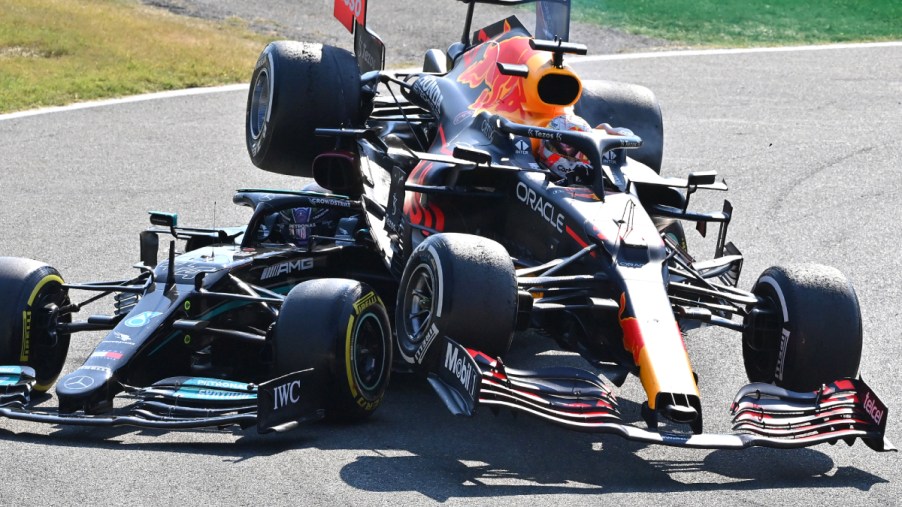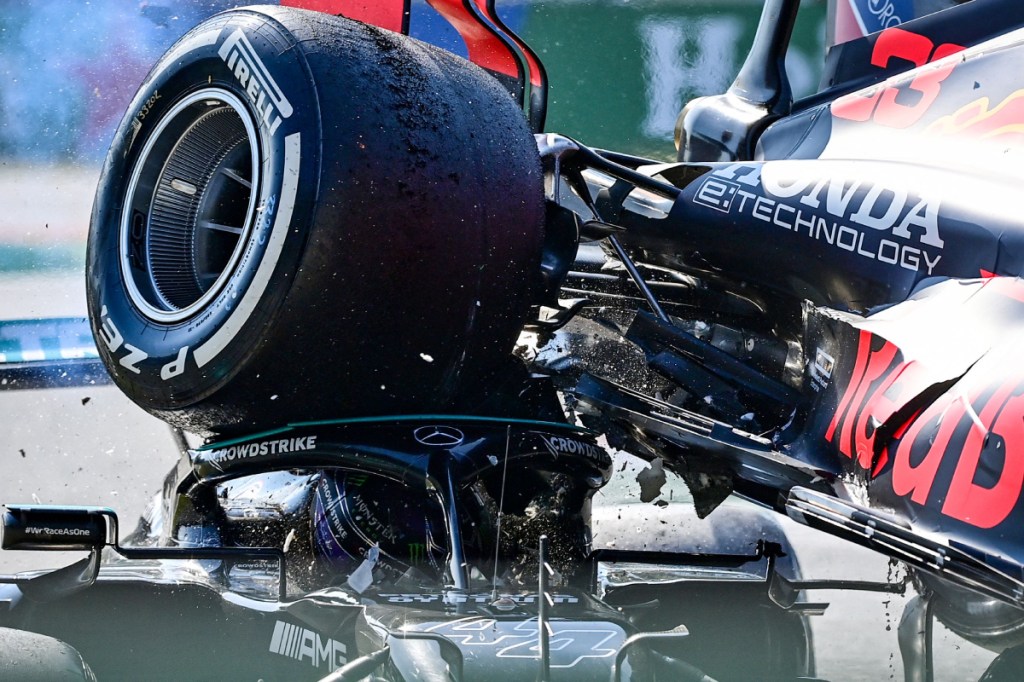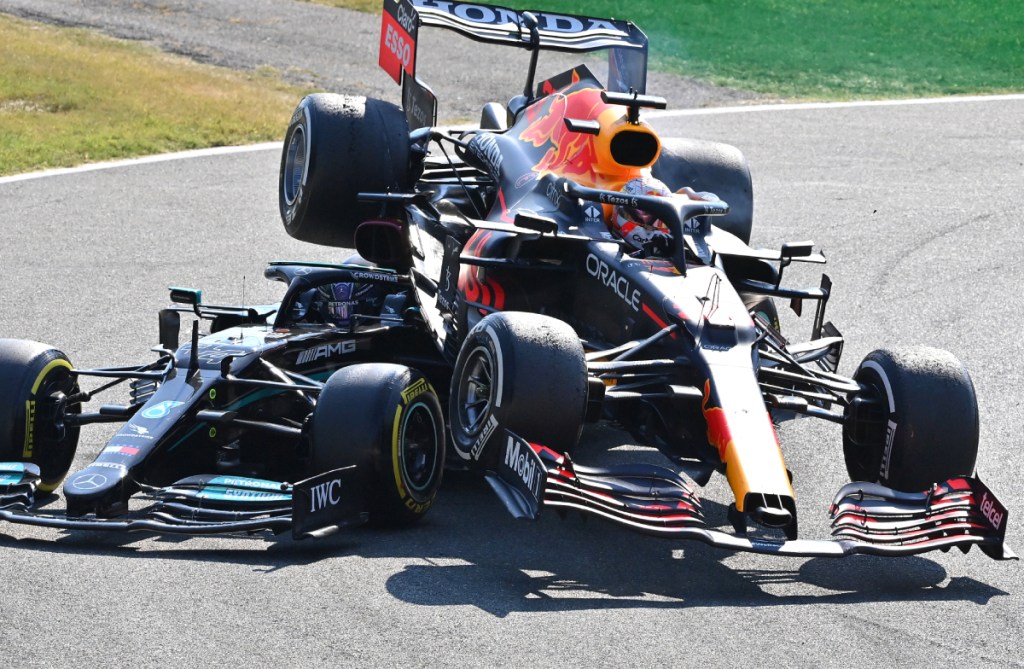
F1 Halo Device Once Again Proves Its Worth Despite Lukewarm Reception
The F1 halo device hasn’t always been a welcome addition to modern Formula 1 cars. Much like seatbelts were first rejected as a necessary evil, the halo safety device received pushback at first. Has the halo device proven to be a beneficial addition to F1 cars in the last three years?
What is the Formula 1 halo device?

The F1 halo device is a cockpit protection system that protects motorsports drivers while competing. According to an article by F1i, the halo was first approved for use in the 2018 season. The halo was not limited to Formula 1 drivers, either. F1, Formula 2, Formula E, IndyCar, and other similar sports utilize the device these days.
CP Tech was the first company to receive certification from the FIA to provide the device. CP Tech delivered “ultra-strong components and solutions for the automotive and motorsport industry, F1i said. The device is meant to protect the driver from small objects, flying debris, and on-track impacts. Formula 1 reported on the incident with the halo device and just how much it helped.
The F1 halo device deserves all the praise it can get

At the 2021 Italian Grand Prix, Max Verstappen and Lewis Hamilton collided during the race. Verstappen’s Red Bull Racing car went up and over Hamilton’s Mercedes, where it came to a stop. In the event’s media coverage, the Red Bull Racing RB16B Honda can be seen touching Hamilton’s helmet.
The Mercedes AMG Petronas Mercedes W12 protected Hamilton, for the most part. The impact damaged the intake behind his head, but the halo kept the flying car from causing more damage.
“Honestly, I feel very fortunate today. Thank God for the halo, that ultimately, I think, saved me, and saved my neck… I don’t think I’ve ever been hit on the head by a car before and it’s quite a shock for me, because I don’t know if you’ve seen the image but my head really is quite far forward.”
Lewis Hamilton | Formula 1
But the device was a big help when Verstappen had a crash of his own earlier in the season. The halo device kept him safe when the car went into the barrier at over 150 mph.
The safety provided to drivers is worth it
During the 2020 season, Haas driver Romain Grosjean was involved in a horrific crash at the Bahrain Grand Prix. The car Grosjean was driving split in two and caught fire as it hit the guardrail. Due to the halo device, the halo device protected his head from the impact, and he was able to jump out of the car and fire. Grosjean credited the halo device with his safety.
While there were complaints are first that it didn’t look great and wasn’t helpful, the halo device has proven itself to be a worthwhile addition. At first, the arguments used no longer apply as the F1 halo device has continued to keep drivers safe after incidents on the track.



